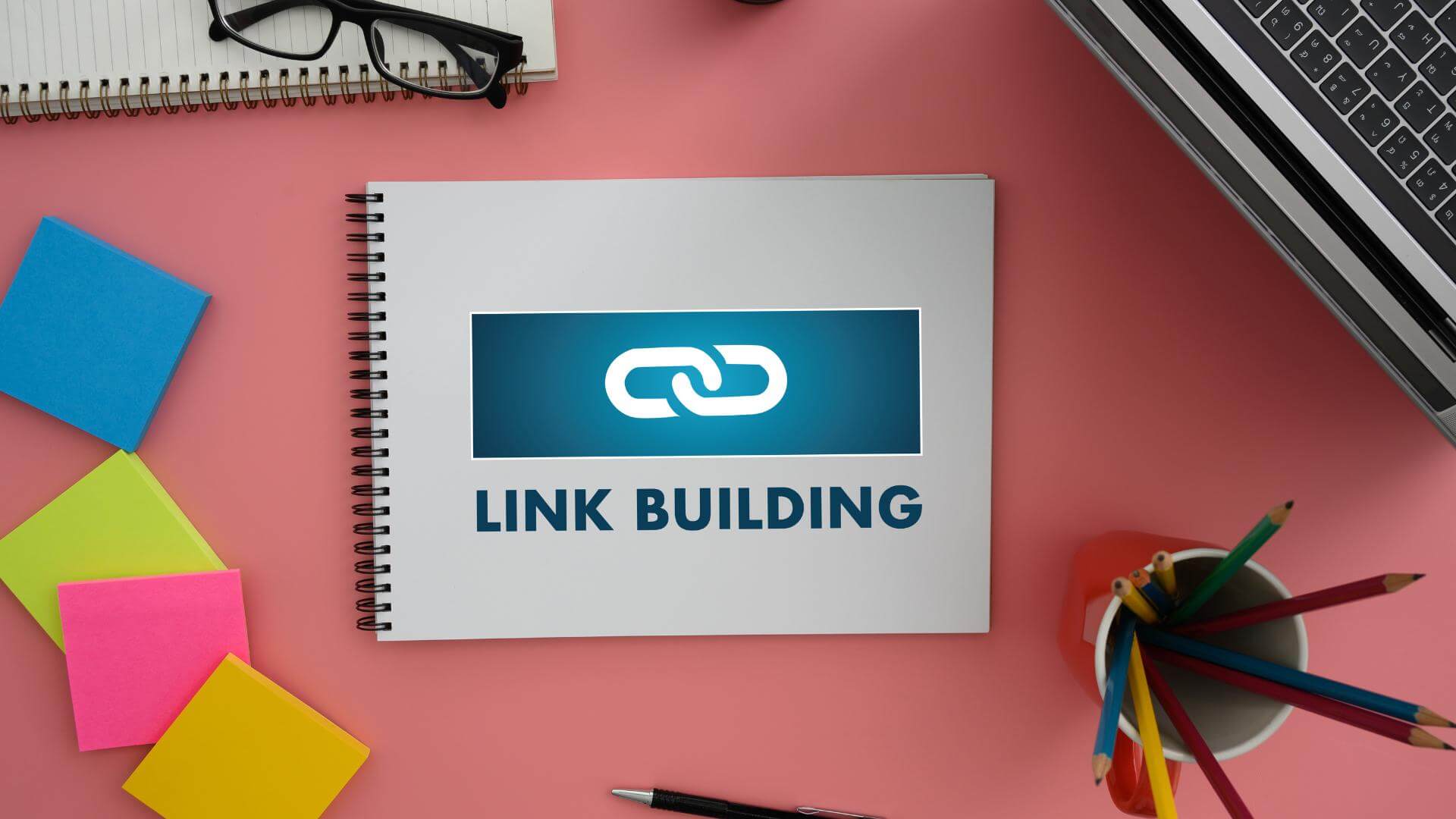
Listen to this article now:
Website migration involves moving your site to a new domain, server, or host. It’s a technical process that demands ample time, thorough planning, and experienced resources.
Your website is one of your primary digital assets as it acts as the gateway to your business and services. Its significance is why you cannot take website migration lightly.
If not executed properly, your site migration can impact your search rankings, result in a loss of data, and cause website downtime.
Let’s explore how you can outweigh these risks with a comprehensive website migration plan!
Table of Contents
- What Is Website Migration?
- 7 Reasons You Might Need to Migrate Your Website
- What Effect Does Website Migration Have on SEO?
- 5 Reasons Website Migrations Fail
- How to Prepare for a Successful Website Migration
- The Website Migration Process
- The Importance of an SEO Migration Expert
- CDP - Professional Website Services
- Connect With CDP Today!
What Is Website Migration?
A website migration refers to any event that causes substantial changes to a website, potentially influencing how it appears in search results.
In SEO terminology, any fundamental change to a site's URL structure is referred to as an SEO migration as it can impact your site’s SEO performance.
Some common examples of a website migration include:
- Changing hosting providers.
- Moving to a new domain, i.e., changing the domain name.
- Adopting a new content management system (CMS).
- Rearranging your information architecture.
- Modifying your URL structure.
- Shifting from HTTP to HTTPS.
- Giving your website a complete design overhaul.
During web migration, data is transferred between domains without compromising its security. You can move various forms of data, such as text, internet files, and authentication files.
It is crucial to store data in a way that allows for its use after migration, requiring specific considerations. When transmitting files, it's important to ensure the correct use of file types and extensions.
Website migrations are typically done to achieve various goals, such as giving the website a new design, enhancing security, updating technology, rebranding, or improving the overall UX.
Regardless of the reason, it's crucial to follow a thorough migration process to ensure a successful update without risking your SEO rankings, traffic, and revenue.

Get Professional Website Maintenance Services NOW
CDP’s website maintenance professionals have the expertise to migrate your site to its new domain and offer more site transitions to meet your goals!
7 Reasons You Might Need to Migrate Your Website
A common reason for website migration is a change in the goals or focus of a company or organization. In such cases, the migration reflects the company's new objectives.
Let’s explore some common reasons businesses or marketers choose to migrate their website:
Changes in Technology
You might migrate your website when considering a shift to better or more advanced technology to keep your site current, secure, and competitive.
It might involve updating your content management system (CMS), upgrading on-premise hardware and servers, enhancing security measures, or integrating platforms like Shopify and WordPress.
Site Location
The most common form of site migration involves changing the location of your site.
This can include moving to a new domain, merging two websites, redirecting a website, implementing geo redirects, or undergoing rebranding.
Businesses seeking rebranding or updating their URL address may change their domain name, necessitating website migration.
CMS Change
Businesses might initiate website migration due to a change in their Content Management System (CMS).
This could be driven by a desire for better eCommerce capabilities and functionalities, prompting a move to a CMS that better suits their needs.
Hosting Changes
Website migration may necessitate a hosting change for various reasons.
If your current host's capabilities no longer meet your needs or you're seeking a more cost-effective option, migrating to a new server becomes a straightforward solution.

Restructuring
This type of website migration focuses on changes related to website structure and hierarchy. It may involve tweaks to navigation, moving internal pages and posts, or altering URL structures.
Platform Update
The platform your website operates on affects its features and user experience.
Periodic updates released by these platforms may require site migration, ranging from minor bug fixes to major version upgrades with new features and improved user experience.
You can also address these changes with professional website migration services.
Website Redesign
A website redesign might not always entail a complete migration.
However, substantial redesigns, involving new hosts, platforms, and possibly a new domain, often require migration for better functionality.
Competent 301 redirects are essential to redirect users to new URLs.
What Effect Does Website Migration Have on SEO?
During the SEO migration process, there's a chance your website rankings may drop as your website needs to be re-indexed.
Google thoroughly indexes your new site and keeps track of redirects from the old one. If the migration is not done correctly, bouncing back can be tough.
A successful migration requires careful planning, precise execution, and constant monitoring to ensure everything works as intended.
The migration of your website can impact how easily it's found in search results due to SEO or Search Engine Optimization - a strategy that improves your site’s visibility in search results.
When you make significant changes to your website, like moving to a new domain name, it can affect how search engines perceive your site.
If the connection between your old and new domain isn't clear, such as through redirects, it can harm your rankings in search results.
A lower ranking means less traffic. Since the first five results receive 68% of all clicks, maintaining a high ranking is crucial for businesses to attract traffic, leads, and sales.
SEO Concerns in Website Migration
Let’s review some common SEO concerns that might arise during your site migration:
Redirects and Broken Links
Changing URLs during migration can lead to disappearing pages and broken links, posing a significant concern for website SEO.
Duplicate Content
Website migration often brings the risk of duplicate content. Search engines may penalize your site, leading to lower rankings.
Technical Issues
Technical factors like mobile friendliness, page load speed, and site architecture can significantly impact your website's search engine rankings. It's crucial to address these during migration.
To avoid technical glitches, hire reliable website maintenance services. It will also ensure your SEO efforts don’t get impacted with site changes.

Mastering SEO Migration for Your Website
While a site migration can adversely impact your SEO performance, when done correctly, it offers a chance to enhance the user experience and enjoy better rankings.
Search engines, like Google, prioritize fast and user-friendly sites in their search results, considering these as crucial ranking factors.
Upgrading to a better hosting service has the potential to improve your long-term ranking performance. Itt can influence and enhance user signals, which are important factors in Google's ranking algorithm.
Therefore, migrating your website can potentially boost its ranking and enhance SEO in the long run, especially if you choose a web host that ensures faster loading times.
Best Practices for Maintaining Your SEO Performance After Migration
Follow SEO migration best practices to ensure that your website migration doesn't negatively impact its visibility on search engines. Here are some ideal techniques to consider:
Careful Planning
Ensure a successful website move by planning carefully. Map out URLs, address technical issues, and set up redirects.
Monitor Search Engine Results
Keep a close eye on search engine rankings post-migration. This helps identify and address any potential issues promptly.
Update Sitemaps
Provide updated sitemaps to help search engines crawl and index your new website more efficiently.
Professional website maintenance services can help you keep your sitemaps and functionality up-to-date.
Ultimately, approach SEO migration seriously and develop a well-thought-out plan for it.
5 Reasons Website Migrations Fail
Let’s explore five common reasons behind the failure of most website migrations:
1 - A Lack of Planning
Businesses often embark on site migrations without a proper plan. Moving to a new CMS without researching best practices can lead to unnecessary complications.
2 - Bad Strategy
Some companies create a migration plan but fail to invest sufficient time in developing a robust strategy. A lackluster strategy puts the entire site migration at risk.
3 - Missing Resources
Some companies neglect to allocate the necessary resources for a successful migration. For instance, insufficient funding may hinder hiring an SEO consultant or collaborating with a web design agency.
4 - Poor SEO
Successful website migration requires SEO expertise. Whether through an SEO agency, consultant, or an in-house team, ensuring you have robust SEO ensures your business doesn't suffer long-term losses in traffic, leads, or revenue.
5 - Weak Testing & No Follow-Up
Companies that don’t have a website migration plan often overlook testing and follow-up as well. Failure to check the effectiveness of redirects or identify bugs in the new navigation or site design can lead to post-migration issues.

How to Prepare for a Successful Website Migration
The right site migration strategy and execution can help you develop a more effective and efficient online presence.
Consider the following key factors when crafting your website migration plan:
Planning the SEO Migration Process
Conduct a thorough assessment of your current website's pages, functionality, and content before starting the migration. Identify what needs to be migrated and potential obstacles.
Develop a detailed plan outlining the migration procedure, including timelines, checkpoints, and communication strategies for informing users and stakeholders about the process and potential disruptions.
Selecting the Right Migration Time
Timing is crucial for website migration. Opt for a period of low website traffic to minimize user impact.
Consider external factors like upcoming marketing campaigns, seasonal trends, and business-related events that could influence website traffic.
Assessing the Inherent Risks
Identify potential risks such as data loss, broken links, and lower search engine rankings. Perform a comprehensive risk assessment and create action plans for each potential problem to minimize these risks.
Backup all files before migration to prevent data loss, set up redirects from old to new URLs to avoid broken links, and maintain SEO components for preserving search engine ranks.
Choosing the Right Migration Method
Choose a migration method based on your website's complexity and specific migration objectives.
Manual migration suits smaller websites with straightforward functionality, while automated migration is more effective for larger, complex websites.
In some cases, a combination of both methods may be necessary for a seamless and successful migration.
Consider variables such as scheduling, risks, and migration strategy to ensure a smooth transition that minimizes user disruption and maximizes the benefits of your new platform.

The Website Migration Process
Let’s discover everything you need to keep a check for a successful website migration process:
Implement a Pre-Migration Checklist
Regardless of the type of site migration you want, you must follow certain crucial procedures to guarantee a seamless transition.
This pre-migration checklist outlines tasks to complete before starting the migration process:
Crawl Your Current Website & Save Existing Data
Conducting a crawl of your current website helps you understand its structure and enables you to download a copy for future comparison or import.
The crawl provides insights into on-page SEO, indexing, URL structure, including information on indexed pages, site health, internal link structure, canonical status, errors, and warnings.
Download key reports from the crawler for future reference, including:
- A list of current indexed URLs
- A detailed backlink report
- Current traffic statistics,XML sitemap
- All existing content such as pages, categories, posts, tags, and media
Download Your Existing Keyword Rankings
Obtain a keyword ranking report for comparison and identifying potential migration issues.
Use tools like Ahrefs or Semrush, or leverage Google Search Console and Google Analytics to download your keyword ranking and traffic estimation reports.
Craft a Redirect Map
This crucial step involves identifying new pages to which existing pages from the current website will be redirected.
Create a redirect map in Excel based on the crawl report, ensuring a 1-1 redirect to avoid missing any old URLs during redirection.

Inform Your Website Visitors
You must notify your website visitors in advance about any changes. This includes letting them know if your website might experience a brief period of unavailability or potential disruptions.
Inform visitors about the specific day and time of the migration, any potential impacts on their use of the website, and when normal operations will resume.
You can convey this information through email campaigns or by posting a notice on your website. Open and proactive communication helps prevent frustration and ensures a hassle-free migration process.
Proactively Create a Personalized Error 404 Page for Users
While the goal is to eliminate existing pages, having a customized 404 page is crucial for maintaining search traffic.
This engaging "error 404" page, featuring indexed new URLs, ensures users are directed to your new website even if they type the old URL.
It not only establishes goodwill with the user but also guarantees a smooth redirection after website migration.
Conduct a Technical Audit on the Staging Site
Before deployment, ensure that the staging site is technically sound by running a comprehensive technical audit that goes beyond SEO.
Key checks include:
- Analyzing site structure and navigation
- Reviewing the crawl report
- Conducting an SEO audit
- Analyzing design and UX
- Evaluating site speed performance
- Checking the sitemap
Completing these tasks before migration helps ensure a smooth and successful transition, minimizing the risk of issues during and after the migration process.

Have Your Website Redesigned By CDP Experts
Give your website the makeover it richly deserves with CDP’s expert web redesign services. Our pros will help you unlock your website design goals with a more functional and performance-focused site!
Successfully Migrate Your Website in 5 Steps
Let’s dive deep into the steps you must take for a successful website migration:
Make the Necessary Site Updates
Work with a professional website design and development team to make crucial site updates. For instance, if you’re redesigning the site for an improved UX, review the wireframes, overall layout, and more.
Work With Your Technical SEO Team
Your developers must fulfill essential SEO requirements to minimize the impact of migration on SEO performance.
Your technical SEO team should tackle issues like:
- URL structure
- Sitemaps (HTML and XML sitemaps)
- Canonical tags
- Internal linking
- Mobile responsiveness
- Structured data
- Metadata
- Page speed & more
It ensures a smooth transition while maintaining and optimizing your website's search engine visibility.
Migrate Your Website
Follow these website migration steps:
- Choose a hosting provider that meets all your requirements, such as better performance, reliability, support, and any specific features you need.
- Create an account with your new hosting provider and set up the necessary environment (e.g., install the web server, database server, and any other required software).
- Copy all your website files from the old hosting environment to the new one. You can use FTP (File Transfer Protocol), SFTP (Secure File Transfer Protocol), or your hosting provider's file manager.
- Export your website's databases from the old hosting environment and import them into the new one. This process varies depending on the database management system (e.g., MySQL, PostgreSQL) and the tools provided by your hosting providers.
- Update any configuration files to reflect the new server settings. This includes database connection details, file paths, and any other relevant configurations.
- If you are changing your domain registrar or DNS provider, update your DNS records to point to the new hosting provider's servers. This ensures that visitors to your domain are directed to the correct server.
Use professional website maintenance services from a reliable third-party agency to avoid the hassle of migrating your site independently.
Create a Testing Environment
Before updating your domain's DNS records, test your website on the new hosting environment using a temporary URL to identify and fix any issues before making the site live.
Block public access and keep search engines from indexing your new pages prematurely.
To achieve this:
- Create a robots.txt file to block search engines like Google.
- Add the "noindex" tag to your new URLs.
- Implement password protection to restrict access.
Take the following steps to thoroughly test your website:
- Assess your site architecture and usability
- Ensure your pages work well on mobile devices
- Evaluate the site’s internal linking, including navigation, header, and footer links
- Double-check your site's title tags, meta descriptions, copy, and more.
- Ensure your site functions properly - check the load speed and the content on each page
- Go over your robots.txt file, HTML sitemap, XML sitemap, and structured data.
Employ multiple perspectives when testing the site to identify and address issues swiftly. While one person may spot a typo resulting from a rebrand on one page, another might notice a broken button on a different page.
If you work with an agency that offers website maintenance services, you can collaborate with them for testing your new site.
Once you've confirmed that everything is working correctly on the new server, update your domain's DNS records to point to the new hosting provider. DNS changes may take some time to propagate, so be patient.
Perform Quick Post-Migration Checks
After completing the website initial migration, follow these steps:
- Confirm that your robots.txt file doesn't block search engines.
- Check that your redirects function correctly, especially for your most important pages.
- Upload your XML sitemap to your Google Search Console account.
These actions help identify critical errors swiftly, such as unintentionally blocking a search engine with your robots.txt file. They also contribute to a smooth website migration, like the submission of your site to Google Search Console.

Implement a Comprehensive Post-Migration Checklist
Once you have successfully completed your website migration, perform these post-migration steps:
Crawl the New Site
Run a crawl on the new site to check that all URLs are live without errors. Use tools like Ahrefs or Semrush for the crawl.
You can identify common issues like canonicals, redirect hops, blocked URLs, missing meta descriptions, and other warnings through a crawl. Ensure the number of live URLs matches the redirect map.
Assess the Sitemap and Robots.txt
Before making any adjustments, analyze the XML sitemap and robots.txt file of the new site. Ensure the XML sitemap is correctly formatted for search engines.
Use a free XML sitemap validator for inspection. Identify and address issues in the robots.txt file using a free tester or Google's robots.txt tester if your property is verified.
Submit the Sitemap to Google Search Console and GA4
Setting up your new site with Google Analytics and Search Console is essential, especially after changing the domain name. If you migrated within the same domain, submit a new sitemap to Search Console.
Optionally, use Search Console features to manually submit URLs for indexing, utilize PageSpeed Insights for speed and UX assessments, and fix any errors reported by the Search Console.
If you switched domains, set up a new property in Search Console and GA4, connect them, verify your property, submit a sitemap, and wait for Google crawlers.
Search Console provides error messages from Google, allowing you to fix issues directly from the dashboard.
Backlink Update Requests
Backlinks are crucial for SEO, and after a successful migration with proper redirects, your backlinks will point to new URLs.
However, for better user experience and search engine crawler ease, reach out to the sites you have your guest posts on to update the URLs for the backlinks.

Monitor Your SERP Rankings and Site Traffic
Keep a close watch on Google ranking factors, including content quality and keyword placement, as they significantly impact your website's performance.
Following successful SEO migration, you must monitor your traffic and analytics to ensure everything is in order. Monitor visitor statistics, bounce rates, page views, and more for better optimization.
To track activity after website migration, utilize tools like Google Analytics and SERPS.com. If it aligns with your budget, consult with an SEO company to enhance your migration results.
Remove All Duplicate Content
Duplicate content issues may arise from plagiarized content or identical URL parameters. Maintaining both www and non-www versions of your domain after migration can result in repetitive and lower-ranked appearances in search results.
To tackle this, use a search console tool to canonize your URL, solidifying your site address as the most authentic and reliable. Implementing 301 HTTP redirects to the correct URL ensures a streamlined approach to resolving this challenge.
Check Website Functionality and Performance
Following a website migration, you must confirm that all features are functioning correctly. This includes a thorough review of the website's forms, images, and other multimedia content.
This process helps identify and address any issues that may have arisen during the migration. Additionally, assess your site’s performance.
A website that loads slowly can result in a high bounce rate, adversely affecting the user experience. Make sure your site is operating smoothly and loads pages promptly.
Read Our Comprehensive Blog Post: Factors to Consider When Choosing a Web Development Company
The Importance of an SEO Migration Expert
A successful website migration plan goes beyond creating a checklist — it's about seamlessly executing that checklist. However, this becomes a challenge for numerous companies as it’s a technical task that requires specialized expertise and time.
Balancing daily business challenges and new projects with a time-consuming site transition can put your website migration in jeopardy. That's why many small-to-medium businesses opt to outsource this task.
They work with an agency like CDP which specializes in web maintenance, design and development, and SEO.
This triple expertise enables our team of seasoned professionals to design, develop, and maintain SEO-friendly sites and offer affordable and effective website migration services.
CDP - Professional Website Services
CDP offers the following services that will aid you in your SEO migration efforts:
